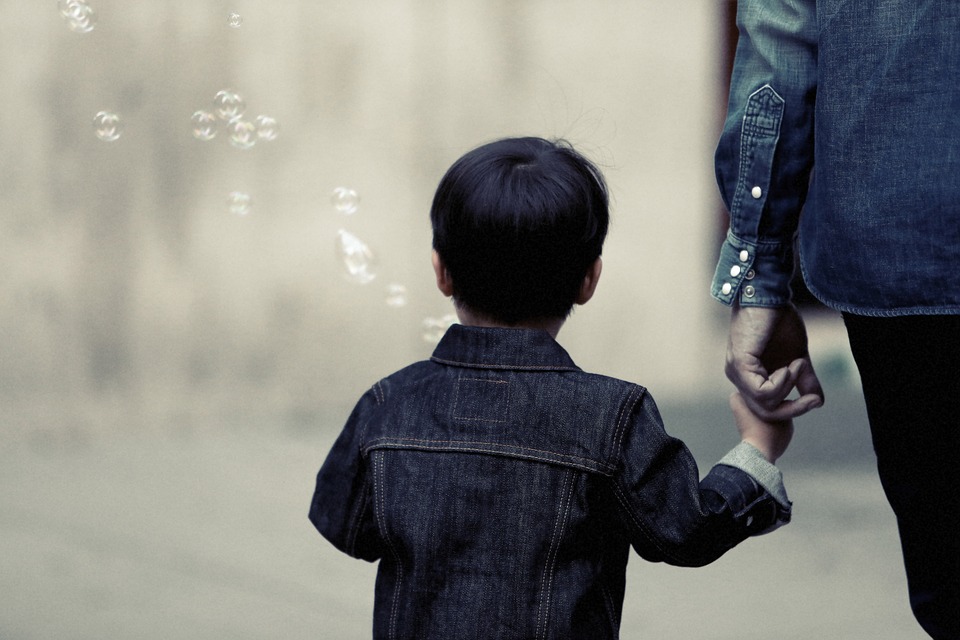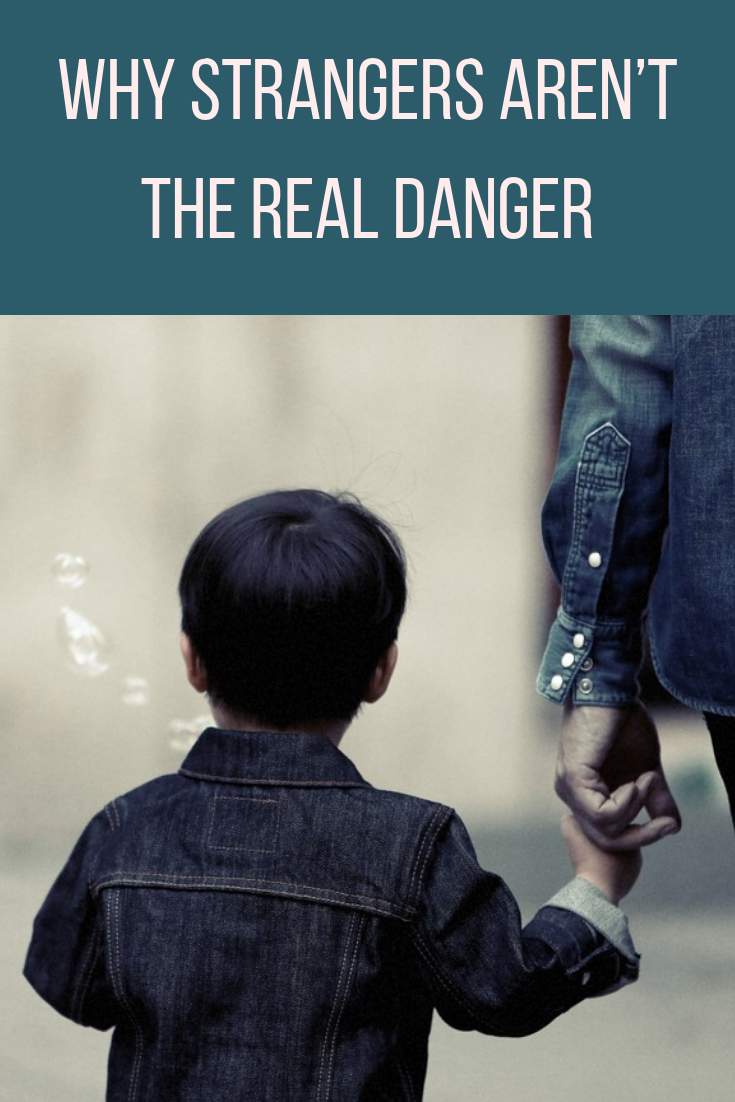
Let me start by saying that I hate writing about this topic. I hate thinking about the world as a scary place where I cannot ever fully protect my children from bad things. I hate talking about statistics because those are backed by real-world examples of families whose lives will never be the same. And I hate when I see these trigger posts on my Facebook news feed because sometimes I want to live in ignorant bliss for just a little bit longer.
But I can’t put my head in the sand and pretend that if I just don’t look at a problem, it will go away.
And I don’t want misinformation to add pain and suffering to someone I care about. So I will write this post and hope that you read it so you can do your best to protect your precious babies.
This post is about sexual abuse perpetrated on children.
I was compelled to write it from my professional background as a psychologist who treats trauma in adults that was largely stemmed from trauma that occurred in childhood. And I’m writing about this topic now because social media got a few things wrong recently in a viral post that I’m sure many of you saw. It was the post about a well-meaning mom who was convinced that human traffickers (and human trafficking is largely about sexual abuse and slavery) were after her babies at a local IKEA.
Now, this mom had reason to be suspicious because strangers were following her family closely and were creepy in their behaviors. They very well could have been up to no go and had nefarious intentions. Or they could have been awkward people who did not mean the family harm. Either way, the mom in the story had every right to be on alert and she diligently watched her children to protect them as we all should in these circumstances.
Unfortunately, many critiqued her behavior asking why she didn’t take pictures or alert staff right away. This is coming from a place called “hindsight bias” where you make decisions after the fact with all the information present that you could not possibly have made in the moment with large chunks of information missing.
Therefore, it is not fair to judge this mom or talk about how you would have done something different because you truly don’t know how you would react in a situation that you have never been in.
To pass judgment on this parent is a way to cognitively soothe your fears that this could NEVER happen to you and your family because you would do something totally different and would be protected from the big bad scary world.
But the truth is, you probably will not make the best choices in times of stress and that’s okay.
None of us are great thinkers under duress.
And to pass the blame on the mother is victim blaming at its finest. Don’t’ perpetuate that. I want to commend this mother for speaking out and making us all a little bit more vigilant.
But we are all now vigilant for the wrong things. I hate to say this, but sexual violence against children is rarely committed by strangers. In fact, according to the National Center for Victims of Crimes, “only 14% of children who suffered sexual abuse were violated by an unknown perpetrator.” This means that in 86% of cases of sexual abuse, the children were hurt by someone they knew, and “60% of children are sexually abused by someone in their social circle.”
The cold reality of this is that kids are abused by people they trust—often a family member or someone who has regular access to them.
This is because sexual abuse is a crime of proximity and opportunity, and sexual abusers come in all shapes and sizes. About one-third of offenders are kids themselves who are likely perpetrating abuse after they themselves were abused. This is because kids don’t understand what is happening to them and they have lots of complicated feelings about their abuse.
But abusers are master manipulators who guarantee the silence of their victims by threats or psychological mind games. And if abused children can’t talk about what happened to them, they act out to make sense of things. And sometimes this can lead to them perpetrating as well. It’s a horrible, messy, vicious cycle.
It’s also important to realize that abusers aren’t always male either. In 14% of cases, women are the perpetrators. So, now it’s time to start coming to terms with the fact that the real monsters are people you know and trust.
Let that sink in for a moment.
The perpetrators target their victims and “groom” them over time by building trust, isolating them, and initiating abuse (https://victimsofcrime.org/media/reporting-on-child-sexual-abuse/grooming-dynamic-of-csa). They then use psychological manipulation to keep their victims quiet. It’s a long and heinous process and it’s hard to know that it is happening. So, now that I’ve officially scared you, here’s what you can do to actually avoid danger.
Here are a few tips from RAINN, a national advocacy group.
Start conversations about safety when your kids are young
Teach young children the language they need to talk about their bodies and information about boundaries to help them understand what is allowed and what is inappropriate. These lessons help them know when something isn’t right and give them the power to speak up.
- Teach children the names of their body parts. When children have the words to describe their body parts, they may find it easier to ask questions and express concerns about those body parts.
- Some parts of the body are private. Let children know that other people shouldn’t touch or look at them. If a healthcare professional has to examine these parts of the body, be present.
- It’s OK to say “no.” It’s important to let children know they are allowed to say “no” to touches that make them uncomfortable. This message isn’t obvious to children, who are often taught to be obedient and follow the rules. Support your child if they say no, even if it puts you in an uncomfortable position. For example, if your child doesn’t want to hug someone at a family gathering, respect their decision to say “no” to this contact.
- Talk about secrets. Perpetrators will often use secret-keeping to manipulate children. Let children know they can always talk to you, especially if they’ve been told to keep a secret. If they see someone touching another child, they shouldn’t keep this secret, either.
- Reassure them that they won’t get in trouble. Young children often fear getting into trouble or upsetting their parents by asking questions or talking about their experiences. Be a safe place for your child to share information about things that they have questions about or that make them uncomfortable. Remind them they won’t be punished for sharing this information with you.
- Show them what it looks like to do the right thing. It could be as simple as helping an elderly person get off a bus or picking up change that someone has dropped on the ground. When you model helping behavior it signals to your child that this is a normal, positive way to behave.
- When they come to you, make time for them. If your kid comes to you with something they feel is important, take the time to listen. Give them your undivided attention, and let them know you take their concerns seriously. They may be more likely to come to you in the future if they know their voice will be heard.
And here is a list of steps you can take if you suspect a child may be a victim of sexual abuse:
https://www.rainn.org/articles/if-you-suspect-child-being-harmed
So, now that I’ve sufficiently freaked you out, remember that the best things you can do to protect your children are to be there for them and to talk to them.
Know what they are doing and be with them when they do it, and keep an open line of communication with no taboo topics. Being a good parent is the best way to protect your children. Sometimes that means being vigilant at IKEA and sometimes it means being vigilant of friends, family, and community leaders.
The world is a scary place, but your child’s world doesn’t have to be.













